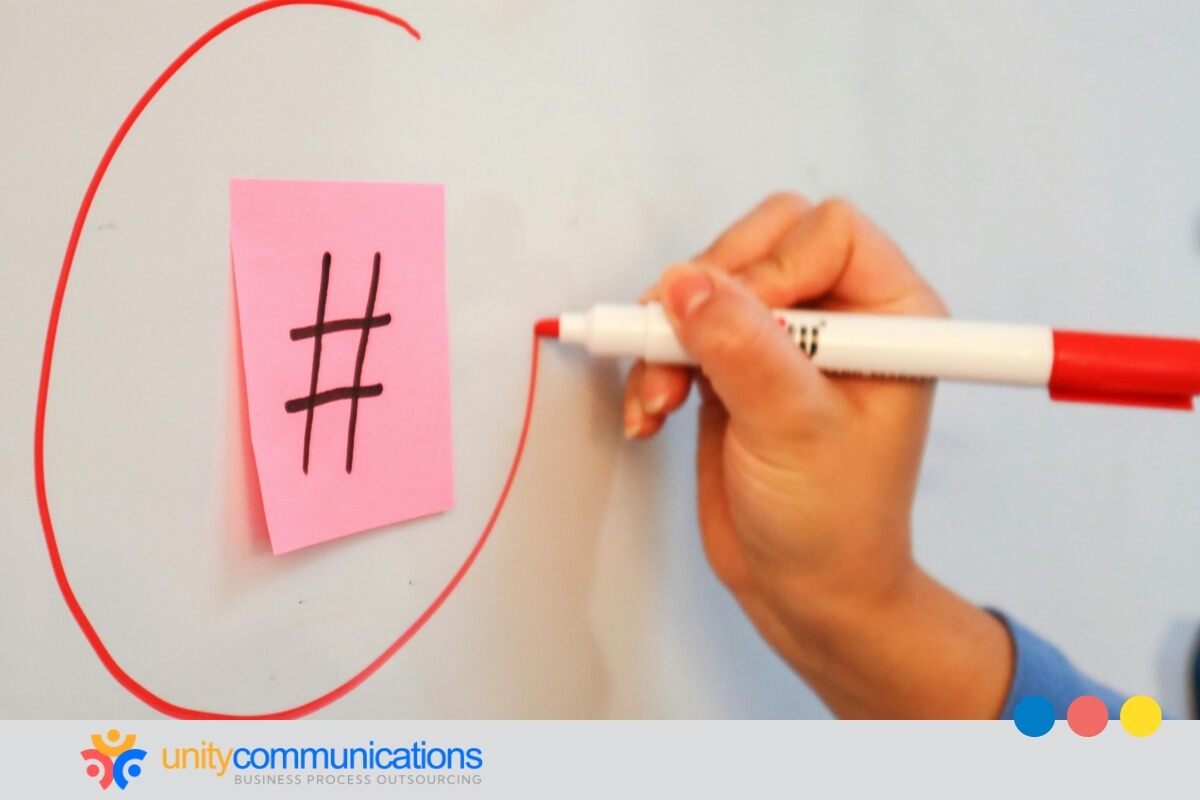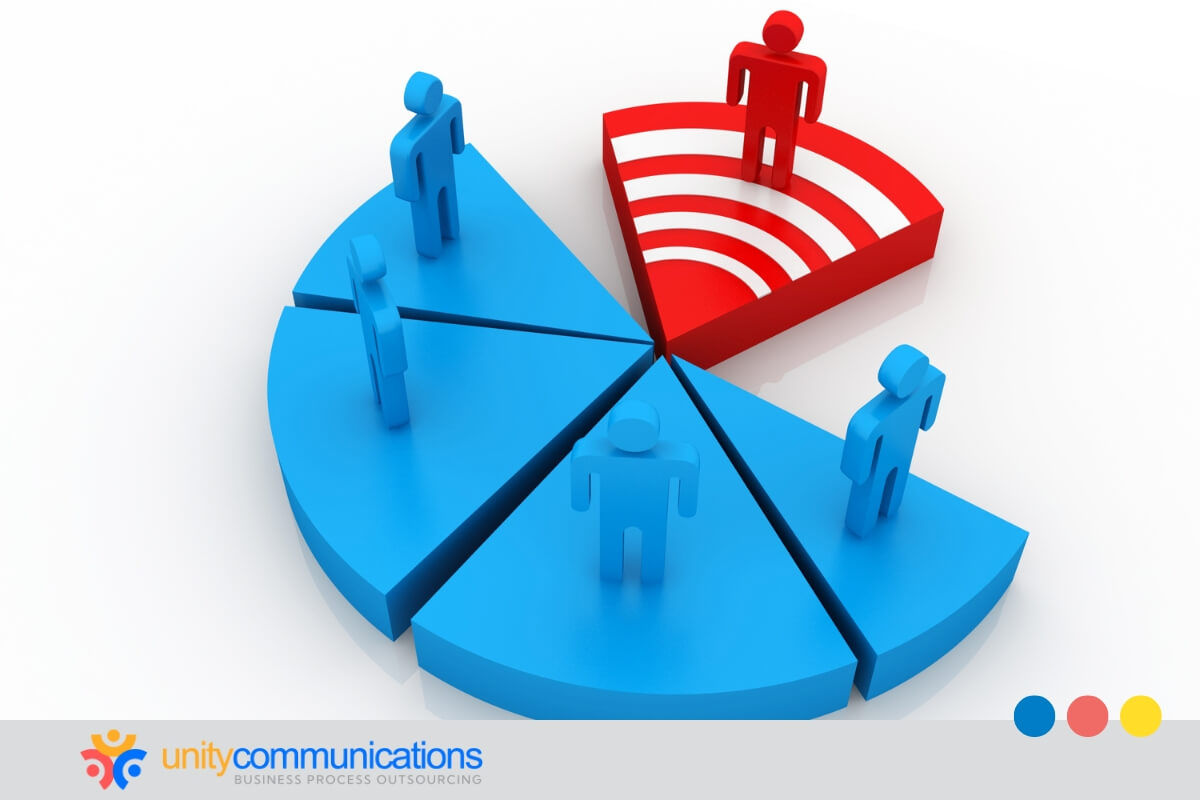Table of Contents
Social media marketing builds brand awareness, engages customers, and drives sales. However, not all strategies are created equal. Consider organic vs. paid social media marketing approaches.
When deciding on social media marketing services to scale the business, which should you focus on? The answer depends on your goals, budget, and timeline.
This guide explains the key differences between organic and paid social media marketing and examines their reach, effectiveness, and ROI. It explains how to maximize your social media presence by strategically combining both approaches. You’ll also learn how outsourcing can help you get the best of both worlds.
What is organic social media marketing?

Organic social media marketing involves growing and engaging an audience on social media platforms without paid advertising. Common tactics include:
- Sharing content such as posts, images, videos, and stories
- Responding to comments
- Participating in trending conversations
- Leveraging hashtags to increase visibility
In 2022, the Search Engine Journal reported that companies increased their organic social media marketing budget, emphasizing the strategy’s role in business growth. Businesses spent more on specialists such as social media or community managers, as well as platforms, to gain these benefits:
- Build authentic relationships. Consistently sharing valuable content and interacting with followers can foster trust and loyalty. They also humanize your brand and encourage long-term customer relationships.
- Achieve steady growth. Engaging content and active community participation lead to steady growth in followers and brand advocates. Sustainable expansion enhances your brand visibility and credibility over time.
- Gain audience insights. Regular audience interaction provides valuable feedback and insights into customer preferences and behaviors. The information can inform product development and online marketing decisions.
- Improve search engine visibility. Consistent activity and content sharing on social media can indirectly boost search engine rankings, increasing the likelihood of attracting new customers through organic search.
Organic social media marketing grows customer relationships, credibility, and word-of-mouth referrals. Despite its benefits, including cost-effectiveness, it requires time and effort to see significant results.
Work with BPO companies specializing in social media management to maintain an active online presence and grow your community. These digital marketing professionals usually combine organic tactics with paid social media marketing to balance long-term audience growth with immediate reach and conversions.
What is paid social media marketing?
Paid social media marketing is a digital advertising strategy where you pay to promote your content, products, or services on social media platforms. This includes sponsored posts, display ads, and video ads that appear in users’ feeds, stories, or sidebars.
Unlike organic social media marketing, which relies on unpaid content and audience engagement, paid social media marketing uses advanced targeting tools to align campaigns with specific demographics, interests, and behaviors.
This approach requires a significant budget, especially if you are competing against established brands. However, when done right, they offer the following advantages:
- Enhanced targeting capabilities. Paid social media platforms provide advanced targeting options to reach specific demographics based on age, location, interests, and behaviors. This precision improves marketing outcomes, as the most relevant ads appear to audiences.
- Increased brand visibility. Investing in paid social media ads can boost your visibility. With 5.3 billion active social media users worldwide, platforms such as Facebook and Instagram give you massive audiences to tap into quickly.
- Cost-effective advertising. Paid social media marketing is often more affordable than traditional advertising channels because it allows you to target your ideal audience precisely and minimize wasted spending.
- Measurable results. Social media platforms offer analytics tools that give you insights into ad performance. You can monitor metrics such as impressions, clicks, and conversions to assess campaign effectiveness and make informed adjustments.
Paid social media marketing can increase your brand visibility, drive traffic, and generate leads quickly. However, how do you maximize the tools and tactics to increase your investment value?
First, combine it with organic efforts to balance natural engagement with precise marketing. Second, work with business process outsourcing (BPO) firms to leverage specialized services such as ad campaign management, audience targeting, content creation, and performance analytics, and scale your digital marketing team.
BPO companies also use various social ad campaign options, such as cost-per-click (CPC), cost-per-impression (CPM), and conversion-based, to allocate resources efficiently and use the budget wisely while obtaining desirable results.
Deciding on the right strategy
The choice between organic and paid social media marketing depends on your business goals, budget, and resources. Here’s a breakdown to help you decide:
Choose organic social media marketing
- Organic marketing is essential to build long-term relationships and create an authentic brand presence.
- Small businesses or startups with limited budgets can benefit from organic strategies as they require minimal financial investment.
- If your business thrives on customer interaction and word-of-mouth marketing, organic engagement can be highly effective.
- Consistent organic posting can improve search engine rankings and establish your brand as an industry authority.
- If you want to nurture leads without aggressive sales tactics, you can use organic content to educate and engage your audience.
- If your target audience is highly active on social media, consistent organic interactions can keep your brand top of mind.
- If you want to leverage user-generated content and customer testimonials, organic social media is the best way to encourage and share this content.
Organic social media is a powerful way to build lasting trust, nurture leads, and grow your brand without heavy ad spending. If you want long-term engagement and authentic connection, organic is the foundation. Next, let’s explore when paid strategies make the most impact.
Choose paid social media marketing
- If you need quick results, such as lead generation or sales, paid ads can help you reach a targeted audience instantly.
- Paid ads allow businesses to target specific demographics, interests, and behaviors for better conversion rates.
- If you’re launching a new product or running a limited-time promotion, paid ads can maximize exposure.
- Paid marketing helps smaller businesses compete with more prominent brands by increasing content visibility.
- If your organic reach is limited due to social media algorithm changes, paid ads can ensure your content reaches your audience.
- If your brand wants to retarget users who have previously visited your website or engaged with your content, paid ads can bring them back for conversions.
A combination of organic and paid social media marketing can benefit your business. Organic marketing builds long-term trust and engagement, while paid ads provide an immediate boost when needed.
Companies can also turn to BPO to streamline organic and paid social media marketing strategies, allow internal teams to focus on their core competencies, and save up to 70% on costs.
How does outsourcing work in this context? The external provider handles time-consuming activities such as scheduling organic posts, responding to customer inquiries, and optimizing paid ads based on performance data.
Audience targeting: How organic and paid approaches differ

Targeting the right audience is essential for organic and paid social media marketing. However, their approaches to this tactic significantly vary. For example, when targeting with organic social media marketing:
- Audience insights. Organic social media relies on understanding your audience’s behavior, interests, and preferences through direct interactions, comments, and engagement patterns. As you share content and engage with followers, you gain insights into who is most interested in your brand.
- Hashtags and trends. Using relevant hashtags and joining trending conversations helps increase your reach within niche communities. Engaging with followers’ posts and responding to comments boosts organic reach and attracts a like-minded audience.
- Content consistency. Regularly sharing content tailored to your audience’s interests encourages organic growth. As your brand consistently addresses the audience’s needs, your community expands naturally, and engagement improves.
- Platform algorithms. Organic content often relies on platform algorithms to extend its reach, which means audience targeting is based on how well your content resonates with users and prompts engagement.
Organic targeting is all about connection. It thrives on genuine interactions, consistent content, and community engagement to reach the right people. Now, let’s see how paid social media takes a more data-driven route to pinpoint your ideal audience with precision.
- Advanced targeting features. Paid social media allows for more precise audience segmentation. Platforms such as Facebook, Instagram, and LinkedIn offer advanced targeting tools to reach specific groups based on age, location, interests, behaviors, income level, and more.
- Custom audiences and retargeting. Paid campaigns let you upload customer lists, email lists, and website visitors to create targeted ads or retarget previous customers, leads, and audiences.
- Campaign optimization. Paid marketing lets you adjust real-time campaigns based on performance metrics such as click-through rates, conversion rates, and engagement to reach the right audience continually.
- Lookalike audiences. Paid campaigns can also use lookalike audience features, where platforms create audience segments based on the characteristics of your current best customers. This technique lets you reach potential similar new customers.
Outsourcing social media marketing is a strategic solution because social media campaigns can become complex as the business grows and the market changes. Delegating time-consuming but essential tasks such as content creation or campaign optimization to BPO vendors maximizes the impact of both marketing types on your bottom line.
The bottom line
Consider mixing organic and paid social media strategies to maximize your reach and engagement. While organic efforts cultivate trust and long-term brand loyalty, paid advertising ensures that the right message reaches the target audience at the right time. The key lies in aligning each approach with your objectives, budget, and audience behavior.
Working with a BPO service provider can streamline the process. As social media platforms change, combining organic and paid marketing while optimizing resources positions you to grow, engage, and compete.
Want to learn more about BPO for social media marketing? Let’s connect and discuss how we can help you achieve your business goals.




